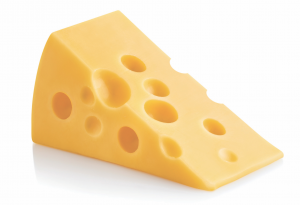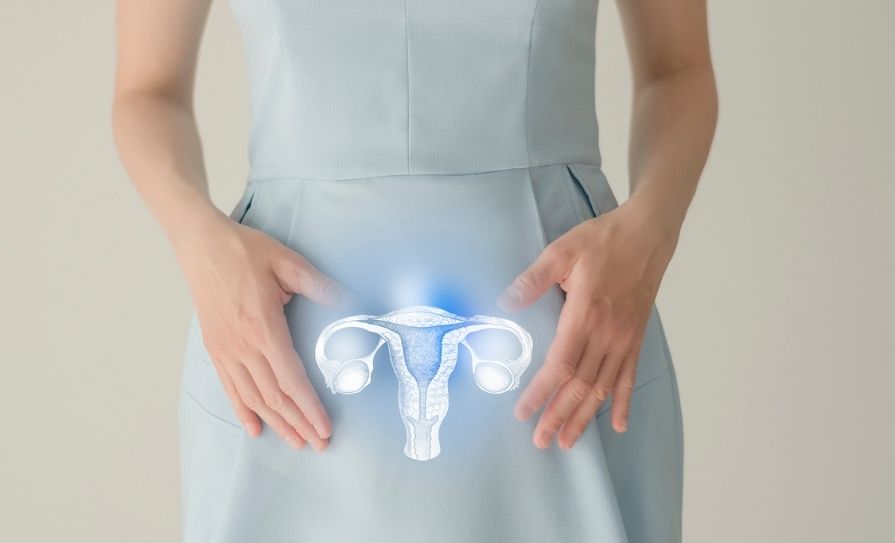A clinical look at the nutritional needs of the older person and how the pharmacist can advise patients by Eamonn Brady MPSI, owner of Whelehans Pharmacies, Mullingar
What is malnutrition?
Malnutrition is a state of nutrition in which a lack of protein, energy and other nutrients causes measurable adverse effects on tissue and/or body form, composition, function or clinical outcome. Malnutrition can be significant if a person has:
? A BMI of less than18.5kg/m2.
? Had unintentional weight loss greater than 10 per cent within the last three-to-six months.
? a BMI less than 20kg/m2 and has had unintentional weight loss greater than 5 per cent within the last three-to-six months.
People are also at risk of becoming malnourished if they have eaten very little or nothing for more than five days and/or this pattern is likely to continue. A UK study showed that among independent older people, 3 per cent of men and 6 per cent of women are underweight, and in nursing and residential care, these figures rise to 16 per cent and 15 per cent, respectively.1
Nutrients in the older person
Nutrients are substances that are essential for growth and good health — they promote energy, they help to form body structures and they are involved in regulating body functions.2 Protein, carbohydrate and fat are classified as macronutrients and primarily provide energy; protein also provides amino acids for synthesis. Minerals and vitamins are classified as micronutrients and play a key role in the body’s structures and functions. Malnutrition may be divided into macronutrient and micronutrient deficiencies.3 Macronutrient malnutrition is referred to as protein-energy malnutrition and is usually associated with a reduction in body mass index (BMI <20kg/m2). Micronutrient deficiencies may be more difficult to detect as they can occur in the presence of a normal body mass index (ie, vitamin D deficiency).
As people grow older, the bones and muscles in their body change, resulting in a decrease of lean body tissue and bone density. This leads to a reduction in basal metabolic rate (which depends on lean body mass), therefore energy requirements fall and hence appetite may lessen. Physical activity helps to lessen the reduction in lean body mass. Physical activity improves balance and reduces falls by keeping muscle strength. Body water content also declines with age and this can impair temperature regulation and increase susceptibility to dehydration. To maintain optimal health in senior years, it is important keep fit and healthy by eating foods high in vitamins and minerals, drinking water, and keeping as active as possible.
More on nutrients
The older body finds it more difficult to absorb vitamins and minerals through food intake, especially vitamin D. Nutrients essential in the elderly are:
Vitamin B complex
- Foods: Whole-grain cereals, bread, red meat, egg yolks, green leafy vegetables, sweetcorn, brown rice, berries, and yeast.

- Role: B vitamins help energy release and are important for the central nervous system. Poor vitamin B status is known to adversely affect cognition in the elderly.4
Iron
- Foods: Liver, red meats, oily fish, nuts, eggs, pulses, and breakfast cereals.
- Role: Important for oxygen delivery in the body. Low iron levels cause anaemia; symptoms include lack of energy and shortness of breath.

Zinc
- Foods: Chicken, meat and fish.
- Role: Zinc is major component of over 300 enzymes and plays a vital role in carbohydrate metabolism, protein synthesis, wound-healing, the immune system, digestion, sugar level control, and the senses of taste and smell.
Calcium

- Foods: Milk, cheese, yoghurt, margarine and oily fish.
- Role: Maintains strong bones.
Vitamin C
- Foods: Fruits and vegetables like oranges, melons, blackcurrants, grapes, tomatoes, red and green peppers and Brussels sprouts.
- Role: Vitamin C boosts the immune system. It is involved in producing protein and collagen (collagen is found in many parts of the body, including connective tissue which helps hold joints together). Vitamin C is a free radical which prevents against cancer and it helps the absorption of iron.

Vitamin D
- Food: Margarine, oily fish and sunlight.
- Role: Helps absorption of calcium, hence strengthens bones. Although it has not been proved, it has been said that vitamin D helps to have a positive effect on the ageing body, so much so that people with higher levels of vitamin D may age more slowly than those with a lower level. It is also possible that vitamin D could help protect the body from cancer and heart-related diseases.
Carbohydrates
- Food: Bread, rice, pasta, cereals and white sugar.
- Role: An important source of energy.

Folic Acid
- Food: Dark green vegetables, breakfast cereals, oranges, yeast extracts.
- Role: Most people assume folic acid is only needed during pregnancy. However, it is important at all ages to properly form red blood cells and for our bodies to metabolise protein for energy. Folic acid and other B vitamins have been shown to fight cardiovascular disease and to help prevent Alzheimer’s, osteoporosis and cancer and it helps to stabilise mental health.
Protein
- Food: Milk, eggs, lean meat, chicken and fish.
- Roles

? Required for building and repair of body tissues (including muscle).
? Enzymes, hormones, and many immune molecules are proteins.
? Essential body processes such as water-balancing, nutrient transport, and muscle contractions require protein to function.
? Protein is a source of energy.
? Protein helps keep skin, hair, and nails healthy.
Fats
- Food: Meat and dairy products. The general advice of using low-fat varieties is less applicable in older people where low weight can be an issue. Grill food wherever possible.
- Role: Another source of energy for the body. Fat also provides insulation for the body and is needed to store fat soluble vitamins: A, D, E and K. After the age of 75, the fat levels in the body decrease.
Water
Dehydration in the elderly often occurs as a result of not drinking enough water. It is important to drink at least eight glasses of water per day (approx 2 litres). As with younger people, a balanced and varied diet is the best way to ensure an elderly person gets all their essential nutrients.

Study evidence
According to a study carried out by the British Association for Parenteral and Enteral Nutrition (BAPEN) in 2007, more than one-in-four of all adults admitted to hospital, to a mental unit or a care home, is at risk of malnutrition.5 This study concluded that “hospitals and care homes should implement nutrition screening on admission to ensure that all those at risk — no matter their age or physical appearance — are identified and an appropriate and individual nutritional care plan is provided.”5
Causes of malnutrition
There are many causes of malnutrition. These can include:
Reduced intake:Poor appetite due to illness, food aversion, nausea or pain when eating, depression, anxiety, side-effects of medication or drug addiction.
Diminished sensory ability:Taste changes, less smell perception,hard of hearing, reduced appetite.
Inability to eat: This can be due to restrictions imposed by surgery or investigations, reduced levels of consciousness; confusion; difficulty in feeding oneself due to weakness, arthritis or other conditions such as Parkinson’s disease, dysphagia, vomiting, painful mouth conditions, poor oral hygiene or dentures.
Gut: Changes in the gut microflora can affect digestion and absorption of nutrients. With a reduced immune system, there may be bacterial overgrowth in the gut, or conversely, the use of antibiotics may reduce the beneficial gut flora, leading to diarrhoea or constipation (probiotics such as acidophilus may help counteract this). With the ageing process, there is also reduced efficiency of motility of gut muscle.
Drug use: Drugs can affect the absorption and metabolism of some nutrients. As a population, older people use a large percentage of prescribed medication, and many are often using more than one drug, as well as some over-the-counter medicines. Clinical effects of these drugs on an already less efficient metabolism can be loss of appetite and taste changes from chemotherapy and analgesics, or specific nutrient interactions, for example hypokalaemia with loop diuretics and hypocalcaemia from corticosteroids.6 Tetracycline and ciprofloxacin affect absorption of calcium and magnesium.
Lack of food availability: Poverty; poor-quality diet at home, in hospital or in care homes; problems with shopping and cooking.
Impaired absorption: This can be due to medical and surgical problems effecting digestion and stomach, intestine, pancreas and liver.
Altered metabolism: Increased or changed metabolic requirements related to illness, ie, cancer, surgery, organ dysfunction, or treatment.
Excess losses: Vomiting; diarrhoea; stomas; losses from nasogastric tube and other drains or skin exudates from burns.
Consequences of malnutrition
- Increased risk of infections.
- Delayed wound-healing.
- Impaired respiratory function.
- Muscle weakness and depression.
Detection of malnutrition
Although biochemical measurements can contribute to nutritional assessment, none can reliably measure nutritional risk, ie, a low serum albumin is almost always a marker of a fluid overload rather than a marker of malnutrition.
The best indicators of poor nutrition are measurements of weight and height. Other measures in specialist circumstances include skin-fold thickness, arm circumference and grip strength measurements. These generally need an experienced assessor. These measurements can then be used with the following questions:
Has your patient been eating a normal and varied diet in the last few weeks?
Has your patient experienced intentional or unintentional weight loss recently? Obesity or fluid balance changes and oedema may mask loss of lean tissue. Rapid weight loss is a concern in all patients, whether obese or not.
Can your patient eat, swallow, digest and absorb enough food safely to meet their likely needs?
Does your patient have an unusually high need for all or some nutrients? Surgical stress, trauma, infection, metabolic disease, wounds, bedsores or history of poor intake may all contribute to such a need.
The best indicators of poor nutrition are measurements of weight and height. Other measures in specialist circumstances include skin-fold thickness, arm circumference and grip strength measurements
Does any treatment, disease, physical limitation or organ dysfunction limit your patient’s ability to handle the nutrients for current or future needs?
Does your patient have excessive nutrient losses through vomiting, diarrhoea, surgical drains, etc?
Does a global assessment of your patient suggest under-nourishment — low body weight, loose-fitting clothes, fragile skin, poor wound-healing, apathy, wasted muscles, poor appetite, altered taste sensation, altered bowel habit. Discussion with relatives may be important.
In light of all of the above, can your patient meet all of their requirements by voluntary choice from the food available?
Understanding that asking these questions takes a significant amount of time and expertise, a number of screening tools have been developed to help identify whether a patient is at risk of malnutrition. Examples include the Mini Nutritional Assessment (MNA)7 and the Malnutrition Universal Screening Tool (MUST) developed by BAPEN. Performing a routine nutritional ‘screening’ should result in early identification of patients who might have otherwise been missed.
Nursing care strategies
A Collaboration
1 Refer to dietitian if patient is at risk for or has under-nutrition.
2 Consult with pharmacist to review patient’s medications for possible drug-nutrient interactions.
3 Consult with a multidisciplinary team specialising in nutrition.
4 Consult with social worker, occupational therapist, and speech therapist as appropriate.
B Alleviate dry mouth
1 Avoid caffeine; alcohol; tobacco; and dry, bulky, spicy, salty, or highly-acidic foods.
2 If patient does not have dementia or swallowing difficulties, offer sugarless hard candy or chewing gum to stimulate saliva. Biotene and Bioxtra gels, mouthwashes and chewing gum can relieve dry mouth.
3 Keep lips moist with petroleum jelly.
4 Encourage frequent sips of water.
C Maintain adequate nutritional intake
Daily requirements for healthy older adults include 30kcal per kg of body weight and 0.8-to-1g/kg of protein per day, with no more than 30 per cent of calories from fat. Carbohydrate, protein, and fat requirements may differ, depending on degree of malnutrition and physiological stress.
D Improve oral intake
1 Mealtime rounds to determine how much food is consumed and whether assistance is needed.
2 Limit staff breaks to before or after patient mealtimes to ensure adequate staff are available to help with meals.
3 Ask family to bring favorite foods from home when appropriate.
4 Ask about and aim to fulfill patient food preferences.
5 Suggest small, frequent meals with adequate nutrients to help patients regain or maintain weight.
6 Provide nutritious snacks.
7 Help patient with mouth care and placement of dentures before food is served.
E Provide conducive environment for meals
1 Remove bedpans and urinals from room before mealtime.
2 Administer analgesics and antiemetics on a schedule that will diminish the likelihood of pain or nausea during mealtimes.
3 Serve meals to patients in a chair if they can get out of bed and remain seated.
4 Create a more relaxed atmosphere by sitting at the patient’s eye level and making eye contact during feeding.
5 Order a late food tray or keep food warm if patients are not in their room during mealtime.
6 Do not interrupt patients for round and non-urgent procedures during mealtimes.
F Specialised nutritional support8
1 Start specialised nutritional support when a patient cannot or will not eat adequately and if the benefits of nutrition outweigh the associated risks.
2 Prior to initiation of specialised nutritional support, review the patient’s advanced directives regarding the use of artificial nutrition and hydration.
Provide oral supplements
Supplements should not replace meals but rather be provided between meals, but not within the hour preceding a meal and at bedtime.9
Oral nutritional supplements The type of oral nutritional supplements (ONS) most commonly prescribed in the community are the ‘sip feeds’, which include ready-made milk-, juice- and yoghurt-based or savoury drinks. Other formulations available include dessert-type products and powder supplements that are made up into a drink/added to drinks or food. These products contain different amounts and types of vitamins, minerals and/or macronutrients.
Although ONS are widely used, currently, the evidence base for their usage is mixed. The American Dietetic Association has stated that the best nutritional strategy for promoting optimal health and reducing the risk of chronic disease is to have a varied diet.10 Long-term usage might result in reduced food intake.11 A UK study also showed no association between ONS and improvements in either mortality or functional outcomes.11
Food is the best vehicle for appropriate nutrient consumption.12 According to the National Medicines Information Centre in St James’s Hospital, Dublin, no studies have yet determined the optimum usage of ONS in terms of the most appropriate patients, the optimum dose and duration of use.13Despite lack of evidence, ONS has a role in many circumstances; therefore, it is important to liaise with nutrition specialists such as dieticians before ONS can be recommended. For the added reason of the high cost of ONS to the State, the HSE recommends that ONS are only commenced after the patient is assessed by a dietician.







